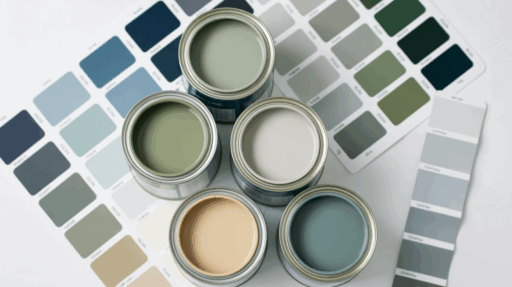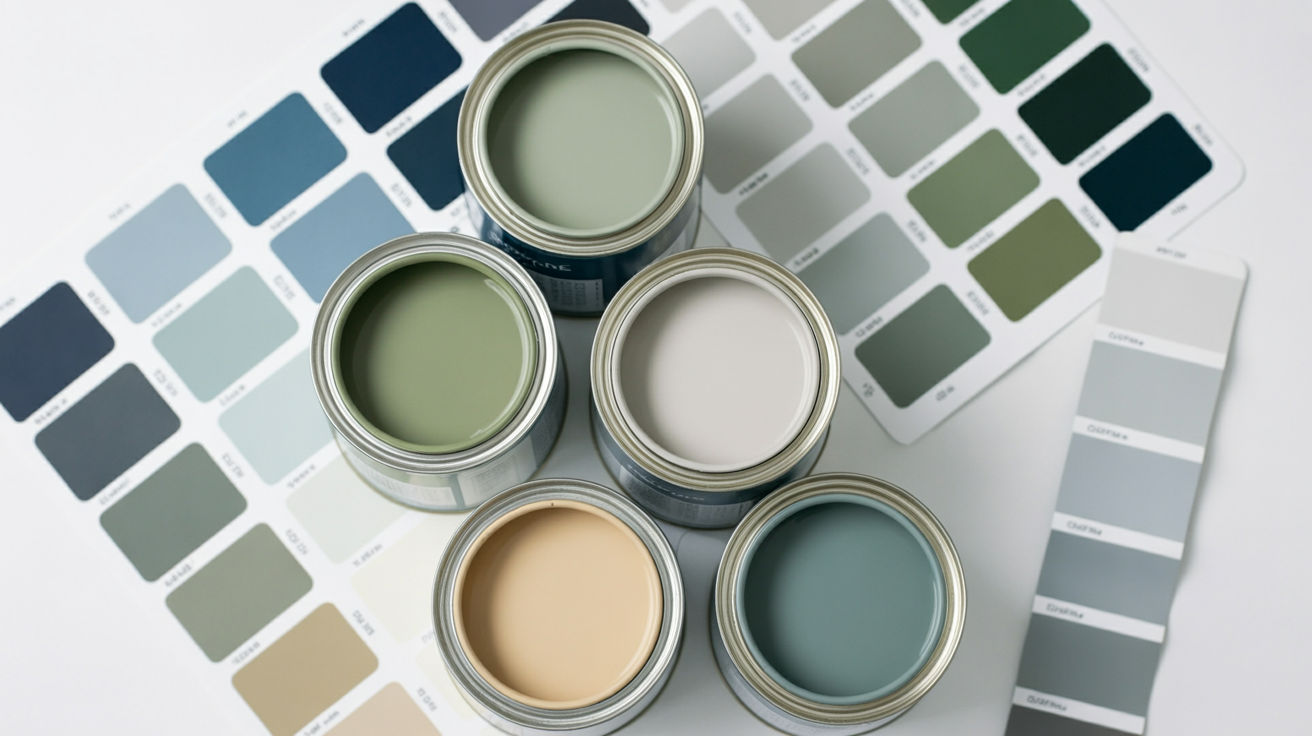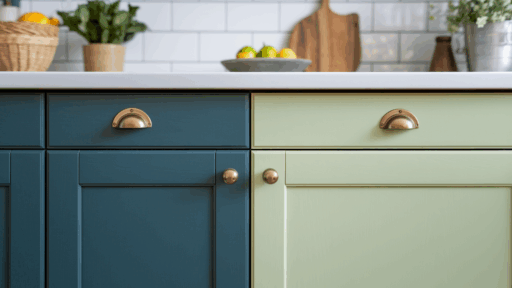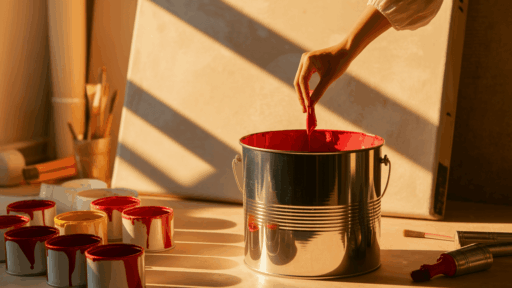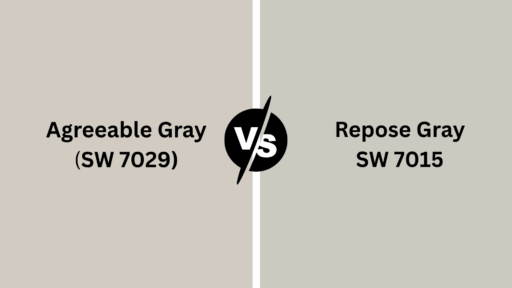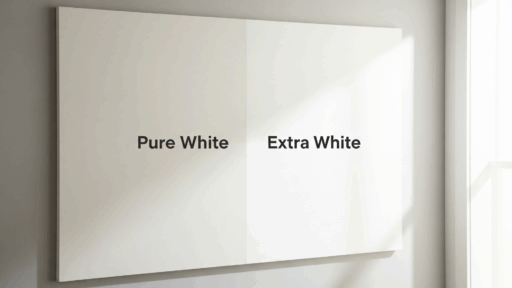Ever wondered why some painted walls look perfect while others show every fingerprint and scuff mark?
The secret isn’t just the color, it’s the sheen. Choosing the right paint sheen can make or break your painting project.
While color gets most of the attention, the finish you select affects how your paint looks, feels, and performs over time.
Different sheens reflect light differently and offer varying levels of durability, making some better suited for high-traffic areas while others work best in quiet spaces.
This guide explains each type of paint sheen and shows you exactly where to use them for the best results.
What is Paint Sheen?
Paint sheen refers to how much light a painted surface reflects to your eyes. Think of it as the difference between a mirror and a chalkboard – one reflects light clearly while the other absorbs it.
The amount of reflection determines if the paint looks shiny, smooth, or completely flat.
Sheen affects more than just appearance. Higher-sheen paints typically contain more resins, making them harder and more durable. They resist stains and clean more easily but show imperfections more readily.
Lower-sheen paints hide wall flaws better but don’t stand up to heavy cleaning or moisture as well.
The finish you choose impacts both how your room looks and how well your paint job holds up to daily life.
Designer Paint Sheen Guide
Paint manufacturers offer several standard sheen levels, each designed for specific situations. These range from completely flat finishes that absorb almost all light to high-gloss options that reflect light like glass.
Most paint lines include six main sheen categories, and understanding these differences helps you match the right finish to each room’s needs.
- Flat to Matte: Best for hiding imperfections in low-traffic areas
- Eggshell to Satin: Perfect balance for most living spaces
- Semi-Gloss to High-Gloss: Maximum durability for trim and high-use surfaces
- Specialty Finishes: Unique options like pearl or low-luster for specific needs
Types of Paint Sheens and Their Characteristics
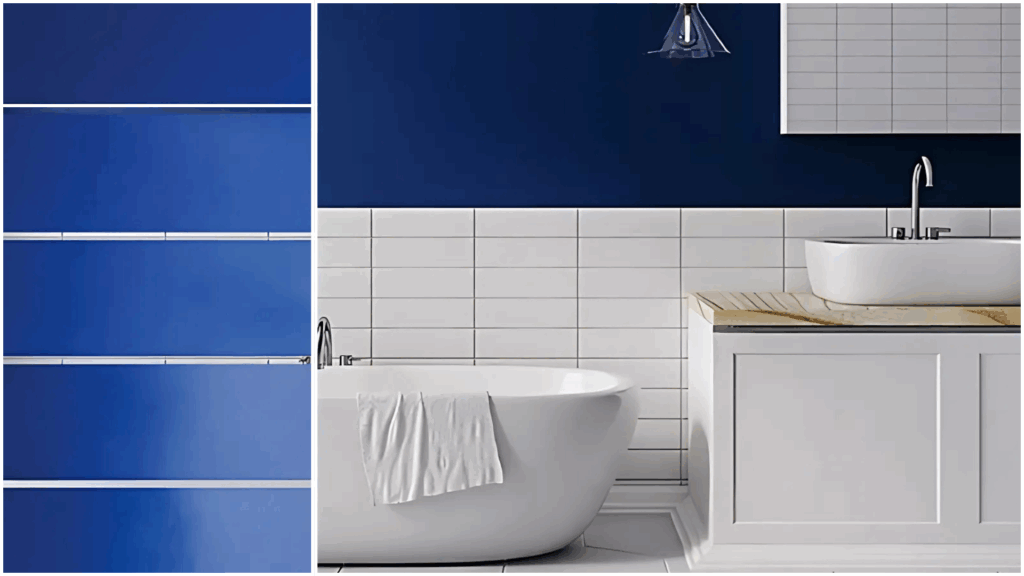
Each sheen level offers different benefits and works best in particular locations around your home. Understanding how these finishes perform helps you make the right choice for every surface in your house.
Flat Finish
Flat paint reflects virtually no light, creating a smooth, non-reflective surface. It hides wall imperfections well and creates a soft, welcoming feel.
However, flat paint marks easily and doesn’t clean well, making it unsuitable for busy areas. It works best on ceilings and in formal living rooms or bedrooms where walls won’t get touched often.
Matte Finish
Matte paint reflects slightly more light than flat, but still maintains a soft appearance. It offers better durability than flat paint while still hiding minor wall flaws.
Matte finishes work well in adult bedrooms, dining rooms, and living areas with moderate activity levels.
Eggshell Finish
Eggshell gets its name from the subtle sheen of an actual eggshell. It reflects more light than matte paint but less than satin, creating a gentle glow.
This finish balances durability with appearance, making it suitable for most living spaces. It cleans better than flat or matte paint while still hiding minor imperfections.
Satin Finish
Satin paint has a smooth, pearl-like appearance that reflects moderate amounts of light. It offers good durability and cleans easily, making it practical for busy areas.
Satin works well in kitchens, bathrooms, and hallways where walls need regular cleaning. The finish shows brush marks more than lower sheens, so proper application technique matters.
Semi-Gloss Finish
Semi-gloss paint reflects significant light and offers excellent durability. It resists moisture and stains well, making cleanup easy.
This finish works best on trim, doors, and cabinets where durability matters more than hiding imperfections. Semi-gloss shows every flaw, so surfaces need proper preparation.
High-Gloss Finish
High-gloss paint reflects the most light and offers maximum durability. It creates a hard, glass-like surface that resists everything from fingerprints to crayon marks.
However, it shows every surface imperfection and requires perfect preparation. High-gloss works best on trim, doors, and furniture where you want a polished look.
Other Glossy Products to Consider
Some manufacturers offer specialty finishes like pearl, which falls between eggshell and satin, or low-luster options that provide extra durability without high shine.
These options give you more control over the exact look and performance you want.
Fun Fact: The paint industry measures sheen using a tool called a gloss meter, which measures light reflection at specific angles. Flat paint reflects less than 5% of light, while high-gloss reflects 70% or more.
Choosing the Right Paint for Durability
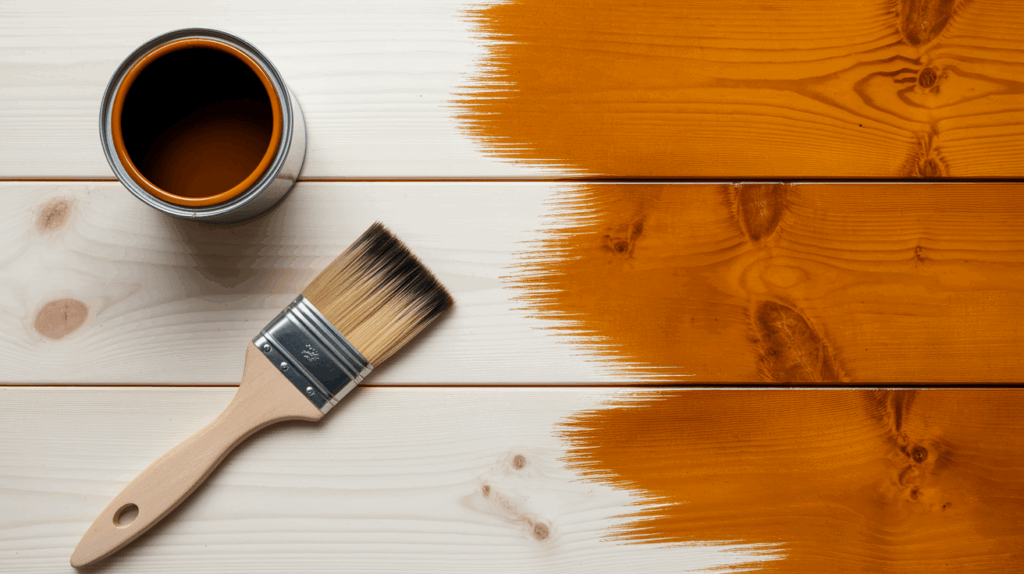
Higher sheens generally last longer because they contain more resins that create harder surfaces. These finishes resist scuffs, stains, and moisture better than flat paints.
In high-traffic areas like hallways or kids’ rooms, choosing a more durable sheen saves money over time by reducing touch-up needs.
Consider how often you’ll need to clean each surface. Kitchens and bathrooms benefit from satin or semi-gloss finishes that handle frequent washing. Bedrooms and formal living areas can use lower sheens since they don’t get dirty as quickly.
Moisture exposure also affects sheen choice. Bathrooms, laundry rooms, and basements need moisture-resistant finishes to prevent peeling and mildew growth.
Pro Tip: If you’re unsure between two sheen levels, test both on a small, hidden area first. Paint a 2×2 foot section and observe how it looks in different lighting throughout the day.
Common Sheen Uses: Where to Use Each Paint Sheen
Matching the right sheen to each area ensures both beauty and functionality in your home. This quick reference guide shows you exactly which finishes work best in specific locations.
| Sheen Level | Best Locations | Why It Works |
|---|---|---|
| Flat | Ceilings, formal living rooms | Hides imperfections, creates a soft look |
| Matte | Bedrooms, dining rooms | Balanced appearance and durability |
| Eggshell | Most living spaces | Good compromise of looks and performance |
| Satin | Kitchens, bathrooms, hallways | Easy cleaning, moderate durability |
| Semi-Gloss | Trim, doors, cabinets | High durability, easy maintenance |
| High-Gloss | Trim, furniture | Maximum durability and rich appearance |
The table above shows that lower sheens work best in quiet spaces where appearance matters most, while higher sheens belong in busy areas where durability is key.
Most homes use a combination of sheens, flat on ceilings, eggshell or satin on walls, and semi-gloss on trim.
Pro Tip: Use the same sheen family throughout connected spaces for visual flow. For example, use eggshell in the living room and dining room if they’re open to each other, even if the colors differ.
Sheen Recommendations for Exterior Surfaces
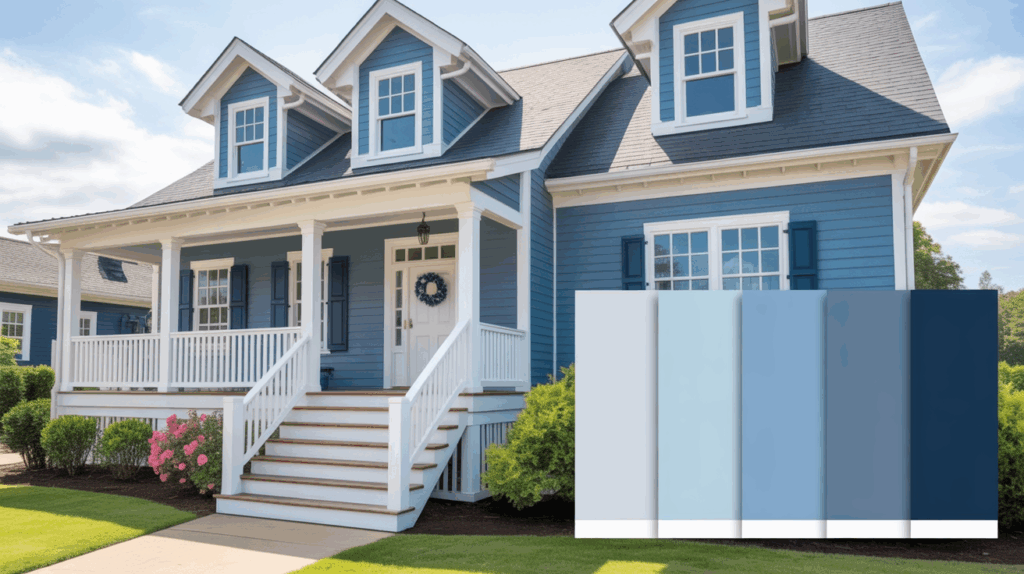
Exterior surfaces face weather, UV rays, and temperature changes that affect paint performance. Choosing appropriate sheens helps your exterior paint job last longer and look better.
1. Flat and Matte Finishes work on exterior siding in protected areas with minimal weather exposure. They hide surface imperfections well but don’t handle moisture or cleaning as effectively as higher sheens.
2. Eggshell and Satin Finishes provide the best balance for most exterior siding, trim, and doors. They offer good durability while maintaining an attractive appearance. These finishes handle normal weather exposure and occasional cleaning well.
3. Semi-Gloss and Gloss Finishes work best on doors, shutters, trim, and other architectural details that need maximum protection. They resist moisture and UV damage better than lower sheens but show surface imperfections more clearly.
Fun Fact: Exterior paints with higher sheens actually help reflect UV rays, which can help keep your home cooler and prevent fading of interior furnishings near windows.
How to Choose the Right Sheen for Your Project
Start by considering how each space gets used. High-traffic areas need durable finishes, while quiet spaces can use softer options. Think about cleaning requirements – areas that get dirty frequently benefit from higher sheens that clean easily.
Light conditions also matter. Rooms with lots of natural light can handle higher sheens, while darker spaces might look better with flatter finishes that don’t compete with limited light sources.
Consider your wall condition, too. Newer, smooth walls can handle any sheen level, while older walls with imperfections look better with flat or matte finishes that hide flaws.
Budget plays a role since higher-sheen paints typically cost more. However, the extra durability often justifies the higher price in appropriate locations.
Conclusion
Selecting the right paint sheen affects both how your rooms look and how well your paint job performs over time. Flat and matte finishes create soft, welcoming spaces but work best in low-traffic areas.
Eggshell and satin provide good balance for most living spaces, while semi-gloss and high-gloss offer maximum durability for trim and high-use surfaces.
The right combination of finishes creates beautiful, long-lasting results that enhance your home’s appearance and value while making maintenance easier.
Smart sheen selection saves money on touch-ups and repainting while keeping your home looking fresh for years.
Download or save a paint sheen chart today to make the perfect choice for every room.

